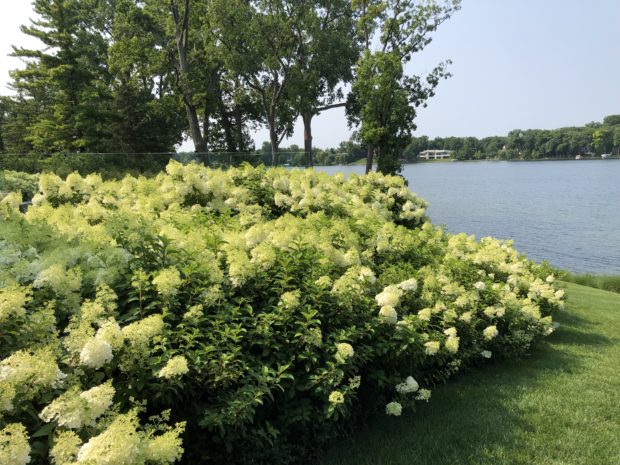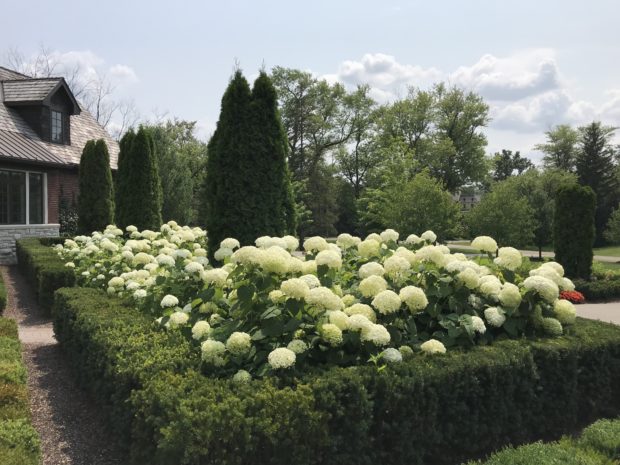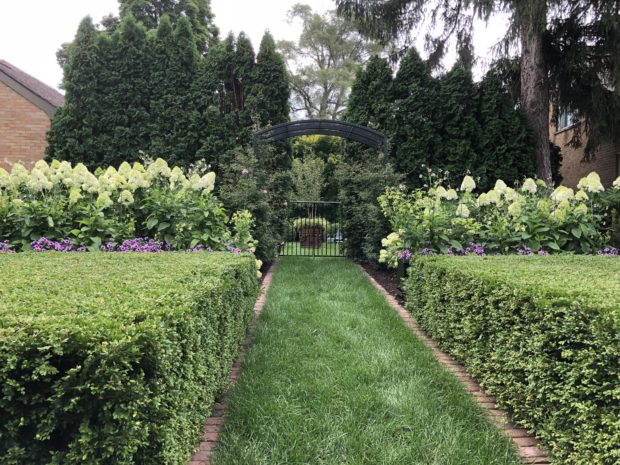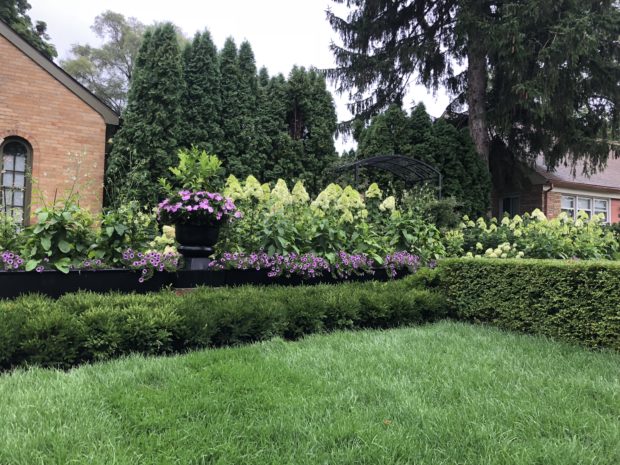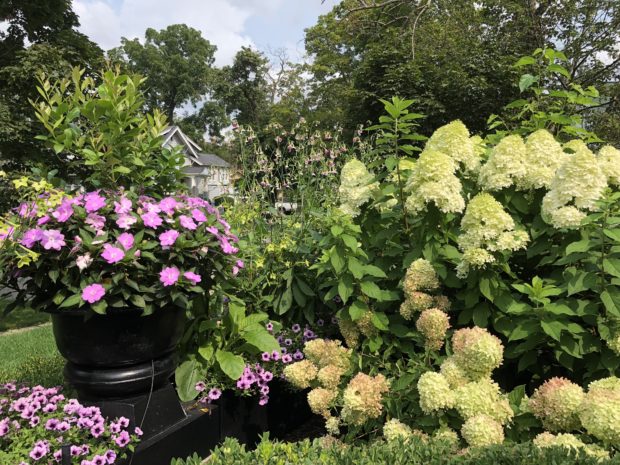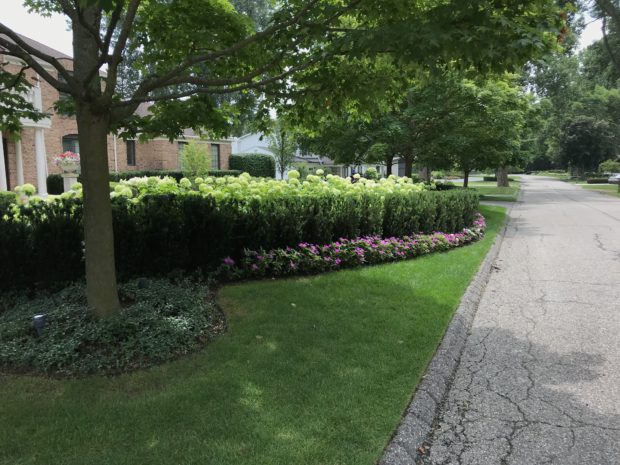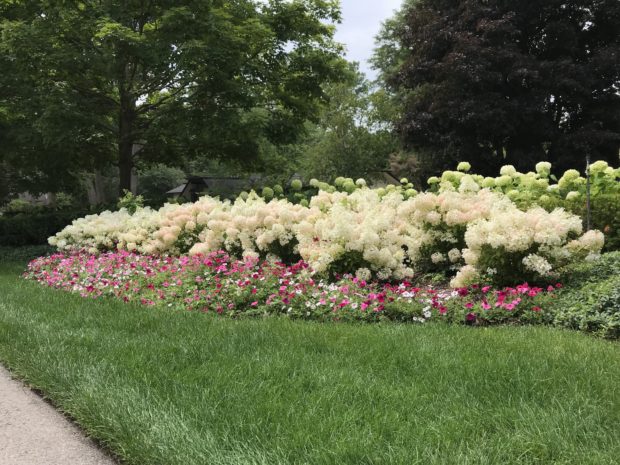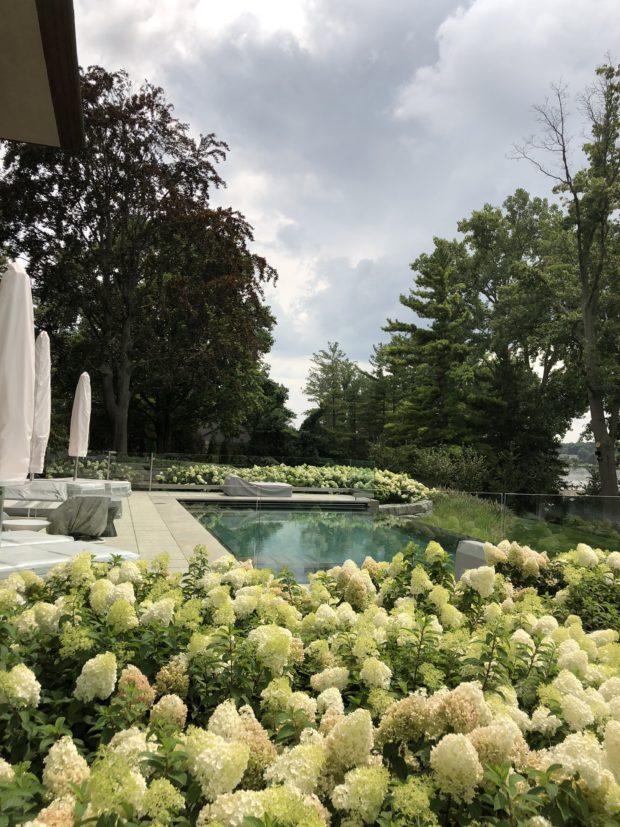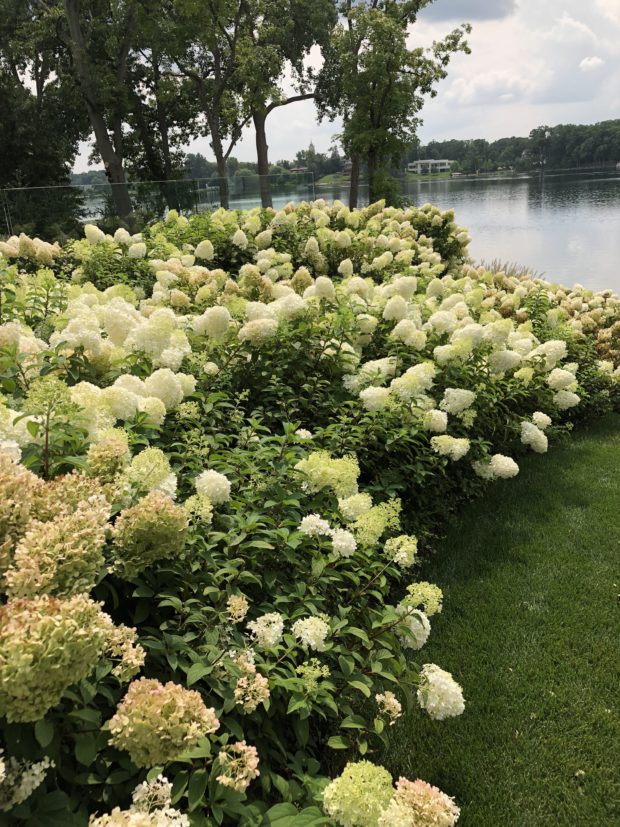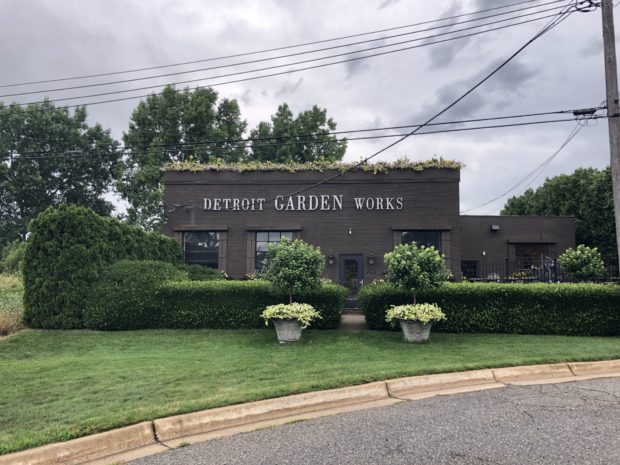 Hydrangeas of varying types have to be the most widely grown summer flowering shrubs of all. How so? The numbers of cultivars bred from the species serrata, macrophylla, paniculata, arborescens, anomala (climbing hydrangea) and quercifolia (oakleaf hydrangea) surely number in the hundreds. The numbers of those hybrids and cultivars commonly available for sale are staggering. And it seems that every year new cultivars are offered for sale. Should you be interested in hydrangeas for your garden, there are many from which to choose. I am by no means complaining. A warm sunny late July day in my zone featuring a blue sky and the hydrangeas in bloom is one definition of a Michigan summer garden. The spring in Michigan is breathtaking for the sheer number and diversity of plants that break dormancy, come on, and bloom. And of course the June garden features the peonies, roses and delphiniums, and countless other perennials. The July and August garden is ruled by the hydrangeas, much to my delight. I do love these robust growing shrubs that grow and bloom profusely. My hydrangeas make me look like an accomplished gardener, and ask for little in return.
Hydrangeas of varying types have to be the most widely grown summer flowering shrubs of all. How so? The numbers of cultivars bred from the species serrata, macrophylla, paniculata, arborescens, anomala (climbing hydrangea) and quercifolia (oakleaf hydrangea) surely number in the hundreds. The numbers of those hybrids and cultivars commonly available for sale are staggering. And it seems that every year new cultivars are offered for sale. Should you be interested in hydrangeas for your garden, there are many from which to choose. I am by no means complaining. A warm sunny late July day in my zone featuring a blue sky and the hydrangeas in bloom is one definition of a Michigan summer garden. The spring in Michigan is breathtaking for the sheer number and diversity of plants that break dormancy, come on, and bloom. And of course the June garden features the peonies, roses and delphiniums, and countless other perennials. The July and August garden is ruled by the hydrangeas, much to my delight. I do love these robust growing shrubs that grow and bloom profusely. My hydrangeas make me look like an accomplished gardener, and ask for little in return.  That said, I am fairly selective in what varieties I plant. The short version is that I avoid any hydrangea that blooms on the previous year’s growth. Michigan winters can and will kill the latent flower buds. Pink and blue hydrangeas may do well for you, but they are underwhelming for me. I tend to stick with just a few of the available white blooming cultivars. Hydrangea paniculata, notably Limelight, and its compact relative Bobo, is hardy as can be. These cultivars are overwhelmingly generous with their flowers. They are solidly hardy in my zone. My Limelight hydrangeas in my front yard have been there over 20 years, and endured every one of my pruning experiments. I try to dust them with Hollytone in the spring – but if I forget, they grow and bloom anyway. If I am late with the water, the wilted leaves let you know to get out the hose and use it. Should I cut the blooms, they are gorgeous in a vase. The aftermath of a vase full of hydrangeas is a vase full of dry hydrangeas.
That said, I am fairly selective in what varieties I plant. The short version is that I avoid any hydrangea that blooms on the previous year’s growth. Michigan winters can and will kill the latent flower buds. Pink and blue hydrangeas may do well for you, but they are underwhelming for me. I tend to stick with just a few of the available white blooming cultivars. Hydrangea paniculata, notably Limelight, and its compact relative Bobo, is hardy as can be. These cultivars are overwhelmingly generous with their flowers. They are solidly hardy in my zone. My Limelight hydrangeas in my front yard have been there over 20 years, and endured every one of my pruning experiments. I try to dust them with Hollytone in the spring – but if I forget, they grow and bloom anyway. If I am late with the water, the wilted leaves let you know to get out the hose and use it. Should I cut the blooms, they are gorgeous in a vase. The aftermath of a vase full of hydrangeas is a vase full of dry hydrangeas.
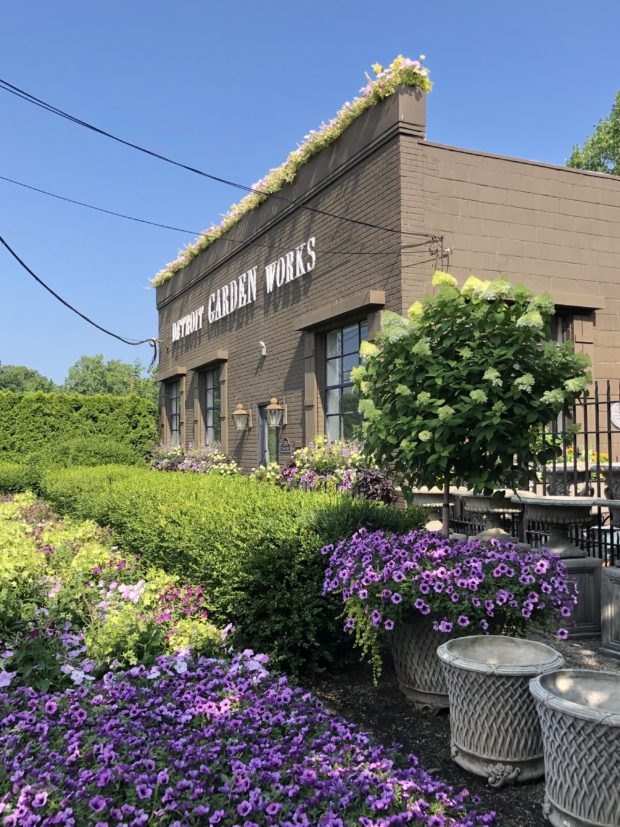 I have a number of clients with Limelight hydrangeas on standard in containers. A number of them choose to overwinter them in their pots, against my advice. I am not a fan of overwintering any plants in pots in my zone. Very few plants can tolerate their roots being above ground during our winter. My worries were unfounded. All of those hydrangeas spending the winter in pots came on without skipping a beat. Our past winter dealt a lot of damage to woody plants. I lost the entire top of a picea mucrunata – shocking, this. Four boxwood burned and died near my front walk. It was a sleeper tough winter. I was shocked at the extent of the winter damage this spring. But the hydrangeas in pots did not skip a beat. One pair has been in pots for 8 years now. Really? That is what I call the willingness to be. I decided to try them myself, both at the shop, and at home. Our grower prunes them after they flower, in July, and again early the following spring. This routine keeps the heads compact and dense.
I have a number of clients with Limelight hydrangeas on standard in containers. A number of them choose to overwinter them in their pots, against my advice. I am not a fan of overwintering any plants in pots in my zone. Very few plants can tolerate their roots being above ground during our winter. My worries were unfounded. All of those hydrangeas spending the winter in pots came on without skipping a beat. Our past winter dealt a lot of damage to woody plants. I lost the entire top of a picea mucrunata – shocking, this. Four boxwood burned and died near my front walk. It was a sleeper tough winter. I was shocked at the extent of the winter damage this spring. But the hydrangeas in pots did not skip a beat. One pair has been in pots for 8 years now. Really? That is what I call the willingness to be. I decided to try them myself, both at the shop, and at home. Our grower prunes them after they flower, in July, and again early the following spring. This routine keeps the heads compact and dense.
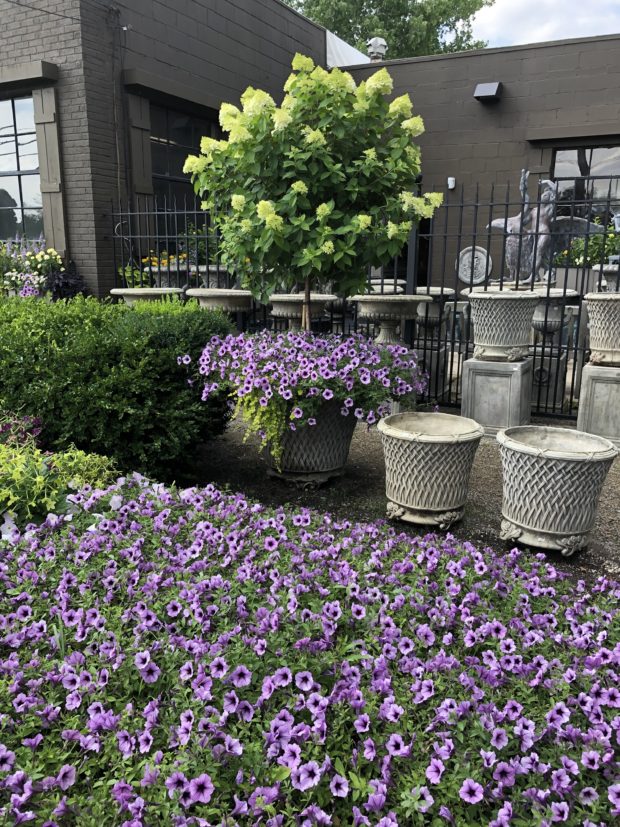 Cultivating hydrangeas is not that difficult. Site them with more sun than not-meaning 6 hours a day of good sun. . They do like that sun to bloom well. Hydrangeas can be quite shade tolerant, but those in a lot of shade have weak stems and sparse flowering. Have a lot of shade? Try the oak leaf hydrangea. All of the cultivars of Hydrangea quercifolia are very tolerant of low light. The oak leafs are reputed to do very well in southern US locations. They are easy going about the soil composition, but soil that is enriched with organic matter is optimal. Being large shrubs with a full complement of large leaves, they need a regular supply of water. Don’t be fooled by their wilting leaves on a very hot day. Those big leaves are thin, and they wilt from heat. If they perk up once the sun goes down, and the weather cools, leave the watering for another time.
Cultivating hydrangeas is not that difficult. Site them with more sun than not-meaning 6 hours a day of good sun. . They do like that sun to bloom well. Hydrangeas can be quite shade tolerant, but those in a lot of shade have weak stems and sparse flowering. Have a lot of shade? Try the oak leaf hydrangea. All of the cultivars of Hydrangea quercifolia are very tolerant of low light. The oak leafs are reputed to do very well in southern US locations. They are easy going about the soil composition, but soil that is enriched with organic matter is optimal. Being large shrubs with a full complement of large leaves, they need a regular supply of water. Don’t be fooled by their wilting leaves on a very hot day. Those big leaves are thin, and they wilt from heat. If they perk up once the sun goes down, and the weather cools, leave the watering for another time. 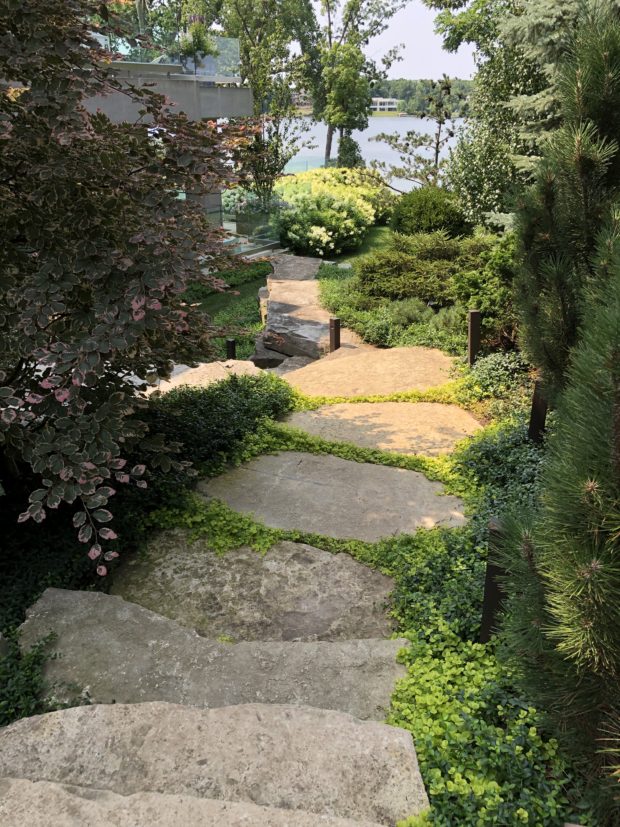 Hydrangeas of one kind or another in my zone have been blooming or are about to bloom for several weeks. Annabelle hydrangeas typically bloom in June here. A very cold spring set the bloom date back a bit, but all of the rain attending that chill resulted in luxuriant growth. The cultivars known as Bobo (a dwarf relative of Limelight) and Incrediball (a more upright and strong stemmed version of Annabelle). The Little Lime hydrangeas are budding up, and will be in bloom soon. As much as my clients might want pink or blue hydrangeas, I discourage planting hydrangeas in my zone that bloom on old wood. Our winters can be breathtakingly cold and hard. The shrubs will survive. The flowers not so much. The Bobo hydrangeas pictured above bloom profusely. The white florets have a decidedly greenish cast. The color of the creeping jenny on these stone stairs echoes that green.
Hydrangeas of one kind or another in my zone have been blooming or are about to bloom for several weeks. Annabelle hydrangeas typically bloom in June here. A very cold spring set the bloom date back a bit, but all of the rain attending that chill resulted in luxuriant growth. The cultivars known as Bobo (a dwarf relative of Limelight) and Incrediball (a more upright and strong stemmed version of Annabelle). The Little Lime hydrangeas are budding up, and will be in bloom soon. As much as my clients might want pink or blue hydrangeas, I discourage planting hydrangeas in my zone that bloom on old wood. Our winters can be breathtakingly cold and hard. The shrubs will survive. The flowers not so much. The Bobo hydrangeas pictured above bloom profusely. The white florets have a decidedly greenish cast. The color of the creeping jenny on these stone stairs echoes that green.
 These Bobos are planted in full sun. Do not try this at home unless you have the patience and dedication to monitor the water closely. The flowers will burn and go brown if the plant lacks for water. Some afternoon shade is a good idea. If you have the room, massing hydrangeas can be an especially dramatic look. Their are no hard and fast rules about the spacing. The mature size of a Bobo is 3′-5′, so spacing them at 4′ apart will result in a billowy and undulating hedge. Spacing them at 36″-42″ inches on center refers to the distance from the center of one plant to the center of the next. This spacing will produce a denser hedge or mass. There are pros and cons to every spacing decision. But it is worthwhile to note that hydrangeas grow very fast.
These Bobos are planted in full sun. Do not try this at home unless you have the patience and dedication to monitor the water closely. The flowers will burn and go brown if the plant lacks for water. Some afternoon shade is a good idea. If you have the room, massing hydrangeas can be an especially dramatic look. Their are no hard and fast rules about the spacing. The mature size of a Bobo is 3′-5′, so spacing them at 4′ apart will result in a billowy and undulating hedge. Spacing them at 36″-42″ inches on center refers to the distance from the center of one plant to the center of the next. This spacing will produce a denser hedge or mass. There are pros and cons to every spacing decision. But it is worthwhile to note that hydrangeas grow very fast.
 A hydrangea of decent size in a nursery pot means the plants are most likely root bound. This means they will need to be watered faithfully, maybe daily, until they settle in. That water needs to be applied directly to the root ball. A newly planted hydrangea that goes dry can react with singed leaves and flowers.
A hydrangea of decent size in a nursery pot means the plants are most likely root bound. This means they will need to be watered faithfully, maybe daily, until they settle in. That water needs to be applied directly to the root ball. A newly planted hydrangea that goes dry can react with singed leaves and flowers.
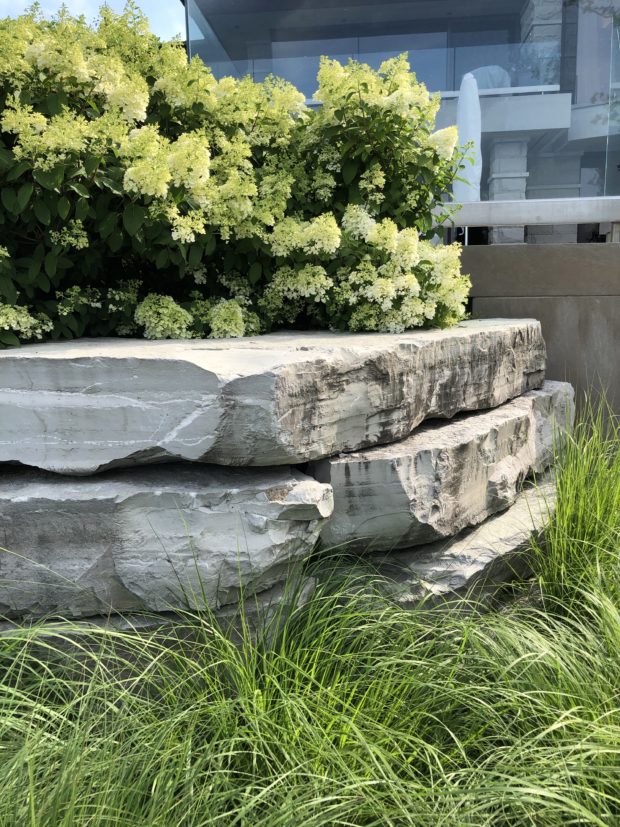 Enough sun and water and some moisture retentive soil is all they ask for.
Enough sun and water and some moisture retentive soil is all they ask for.
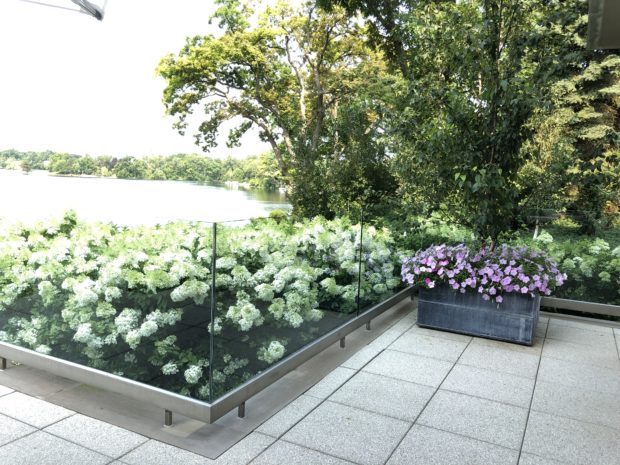 Even the north sides of these south facing hydrangeas bloom well.
Even the north sides of these south facing hydrangeas bloom well.
 On my driveway, a Limelight hydrangea on standard is getting ready to bloom.
On my driveway, a Limelight hydrangea on standard is getting ready to bloom.
